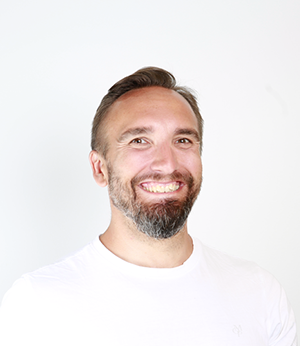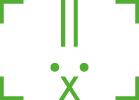When introducing a new patient flow management system like Axel Encounter, attention often turns to the most visible change: self check-in. And for good reason. It saves time and resources, eases the daily routine, and improves the patient experience. However, the full savings potential is much greater than just smoother check-in. When we analyzed one customer's current process step-by-step before implementing Encounter, one insight stood out: the greatest savings come from how and where professionals' time is used, and how data is utilized in daily operations.
1. Self-service makes everyday work easier
Let’s start with the most visible part: the check-in process.
Checking in at the main reception typically takes about three minutes. Often, the patient must queue at the desk, causing strain for both staff and patients. Staff then register the patient and print out their information (around one minute), and verify contact details (another 30 seconds). Altogether, this process takes 4–5 minutes per patient, before they even enter the waiting area.
What about payments? In many organizations, payments still happen at the reception or separate machines, leading to bottlenecks and extra work. Integrating payments into the check-in process via a self-service kiosk or the patient's phone, the entire process becomes smoother, without queues or device limitations.
Axel’s self-service solution handles both check-in and payment, freeing staff for other duties. The average check-in time using Axel Encounter is just 17 seconds. Payment and information collection take about one minute. And if handled via mobile, time becomes a non-issue – even peak hours don’t require more staff or hardware.
2. The biggest savings come from the smarter use of professionals' time
The real savings aren't found in the waiting areas, but where the work actually happens – in doctors' and nurses' rooms. Or rather, during the moments when they aren't yet able to do their job due to unnecessary friction.
Without Encounter, many professionals go through familiar yet burdensome routines. A receptionist checks arrivals manually, taking 30 seconds each time. Nurses relay information manually, often in batches, which also takes time. Patients may be guided to the correct waiting area if they’re in the wrong place, or sometimes even searched for in the hallways, costing several minutes. Transferring a patient from one professional to another may also delay the process by around three minutes. These small delays can add up to six to nine minutes of "hidden load" per patient, before care even begins.
With Encounter, this changes drastically. Doctors and nurses have real-time visibility of the patient’s location and care stage. Calling a patient in is as simple as clicking a button – or it can be automated via SMS at the right moment. Paperwork and manual checks are eliminated. There’s no guessing or searching for patients. Everything works seamlessly, allowing professionals to focus on what they were trained to do: meet and treat patients.
When savings affect clinical work time, the results are visible: more appointments, shorter wait times, and more efficient resource use.
3. Data brings clarity and better situational awareness
Not all benefits need to be measured in minutes. There are also more subtle effects — ones that may take time to become fully visible but are already felt in everyday work, precisely at the points where workflow, collaboration, and the overall customer experience intersect.
One such benefit is continuous visibility into the day’s patient flow. Reservation lists and knowing the patients' locations help professionals plan their day and add predictability. When everyone knows where their colleagues are working, the whole team functions like a well-tuned machine, without constant checking or uncertainty. Room utilization also improves. With real-time room bookings in the system, there’s no need for guesswork or phone calls.
Managing patient flow brings clarity to the day. Patients are called in and guided to the right place more smoothly, avoiding unnecessary movement and waiting, reducing stress for both staff and patients.
And most importantly, as data accumulates, it enables small but meaningful improvements. Data helps plan resource use more wisely, prepare for peak times, and continuously improve operations toward a smoother future.
Summary: Savings come from time, not just technology
Self-service is an essential part of a seamless care pathway, but the biggest gains come from using professionals' time wisely and letting data support decisions, both in the moment and over the long term.
Instead of searching for patients in the hallways, a doctor sees at a glance where the patient is and when they’re ready to be called in. Paper piles and manual checks disappear, and the entire process becomes transparent and continuously improving.
This is where true savings are created, while also enhancing professionals’ peace of mind and the patient experience.





